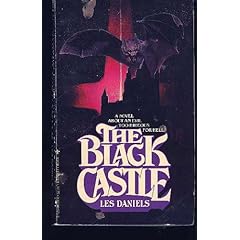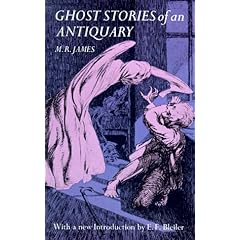Replay by Ken Grimwood
The first book this month isn’t even a horror novel. It is a fantasy, published in 1986 and the winner of the World Fantasy Award for best novel.
The other contenders? Swan Song by Robert R. McCammon. Weaveworld by Clive Barker. On Stranger Tides by Tim Powers. AEgypt by John Crowley. Seventh Son by Orson Scott Card. Misery by Stephen King.
Replay deserved its win. It is a masterful work, but it remains somewhat overshadowed by other major novels for a simple reason: Grimwood was not a prolific writer. He produced only a handful of novels over multiple decades, and none drew the attention of Replay. His body of work is, fairly or not, often judged solely upon the strength of this single book.
Importantly for the sake of this column, though, while this is not a horror novel, it could have been.
The story contains protagonists who have come back from death; a multiple murderer who continually kills the same young girl; an airplane crash viewed from the perspective of someone in the plane; the Kennedy assassination…
The story is that of Jeff Winston, a low-level radio executive who suffers a fatal heart attack. Fatal, however, is a relative term; he wakes up in the past, complete with the memories of his prior life. He has returned to his own body, and has the chance to change what he had done the first time around.
Grimwood succeeds by following Winston through the key points of his life, examining his decisions and the reasons for making them. We, the readers, understand Winston’s rationale and we sympathize with it. When Winston dies the second time… at the exact minute of his initial death… his perspective changes again.
Each “replay” is coming later in his life; this is no simple Groundhog Day scenario; he has a finite quantity of resurrections, he has no control over them, and each time he has less time available to figure out what’s happening, and why.
This is a novel about meaning; the meaning of life and death and the value of our questions about it. Because of its breadth (well over a hundred years, subjectively, are covered through the course of the novel) it provides an excellent example of telling a story through disparate scenes. Because of its focus it provides an excellent example of how to bring a character to life in the mind of a reader. This book has a lot to offer the thoughtful reader and the journeyman writer alike, particularly those who enjoy a seemingly casual writing style. Strongly recommended.
Five stars out of five.

The Black Castle by Les Daniels
The Don Sebastian novels are often luridly described as being about “The vampire who is horrified by people.” This casual description does a gross injustice to the novels.
The Black Castle is our introduction to Don Sebastian, and we quickly learn that Sebastian is only one of the stars of the book. The other star is the setting, the Spanish Inquisition, carefully researched and methodically used by the author both to provide the impetus for the story and the motivation for some of its main characters. Daniels does not fall into the easy trap of creating a story, setting it during a particular time, and adding “realism” to the story by including a particularly vivid description of a key event from that time. Instead, Daniels gives us a story which is intertwined with the Spanish Inquisition, and in so doing makes his tale more powerful and memorable.
The settings are always integral to the Don Sebastian novels, in a way matched only by Chelsea Quinn Yarbro for historical vampire tales. The difference is that Daniels writes classical tragedies, and it is displayed in The Black Castle. The venal and atrocious alike pay for their sins, typically in proportion to the magnitude of their offenses, and yet nothing seems forced. It is the book written in counterpoint to the colony of contemporary vampire protagonists; Don Sebastian is a sympathetic character, but he is also a flawed one. These books remind the reader that the heart of horror literature can be literature, and should be appreciated and sought for that reason alone.
The book was published in 1978, and focuses on three characters: Diego, a Grand Inquisitor in a border city in Spain; his brother, Don Sebastian, who died in battle yet returned as a vampire and now resides in their castle; and Margarita, a local witch. Don Sebastian is writing a book on the supernatural and how to confront it for Diego, who hopes to use the fame it will bring him to succeed Torquemada. He hopes to publicize his prosecution of Margarita for the same reason. Don Sebastian, for his part, is trying to remain alive despite his awareness of the weaknesses inherent to the vampiric condition and simultaneously trying to manipulate his brother toward some uncertain end.
The novel opens with fifteen unnamed men and women walking through the streets of the city and having their exposed backs torn and bloodied by the whips of masked men. The punishment is described as “The Shame” by a vicar, and is viewed as relatively mild. Other activities of the Inquisition, from torture to the auto de fe, are presented later in the book. The cruelty is neither glossed over nor presented in exploitive fashion, and the methodical detail adds to the sense of horror; terrible acts are performed casually, almost dispassionately, and they are performed with the self-justification present in most of humanity. The result is simultaneously unsettling and engrossing.
Four stars out of five.

Ghost Stories of an Antiquary by M.R. James
M.R. James is the definitive English ghost story writer. This, his first collection, contains some of his best-known stories. That should suffice as an encouragement for people to track down a copy. Were this a typical book, it would. Instead, I’ll be encouraging you throughout the review.
Buy this book.
When your name becomes a literary term, you’ve become a success, and “Jamesian” describes a format of the traditional English ghost story. He is as integral to the modern horror story as Edgar Allan Poe or H.P. Lovecraft, but unlike those two he lacks common recognition in America. His stories are readily available, but typically found issued by book clubs and small presses. Lovecraft’s work is repackaged every few years and distributed to the bookstore shelves; Poe’s work is bound in ominbus editions and rebound in treasury format. M.R. James is kept perpetually available for scholars.
Take advantage of that availability. James had the ability, like Poe before him, to write in a fashion which was enjoyable to the readership of the time while remaining accessible to future generations. His prose is complex and stylish without being intrusive, and I am convinced that many of the horror writers of the pulp era were consciously trying to imitate his style and failing.
Buy this book.
The book contains eight stories, many of which have since been adapted for television: Canon Alberic’s Scrap-book, Lost Hearts, The Mezzotint, The Ash-tree, Number 13, Count Magnus, “Oh, Whistle, and I’ll Come to You, My Lad”, and The Treasure of Abbot Thomas. In my opinion, the strongest of the lot is The Ash-tree, for which the highly respected Ash-tree Press is named. Where the other stories tend to fail, if at all, is in their familiarity; in many instances, I was left with the sensation that I’d heard the same story before, in a slightly adapted format. And, in all honestly, I had. These stories, new at the time, have since been used as the inspiration for dozens of other excellent stories and hundreds of bad or mediocre ones. If anything, it impressed me more; despite the familiarity, the stories kept my interest while reading and their construction impressed me afterward, when trying to analyze them.
If you don’t normally read short stories, or avoid single-author collections, you would likely enjoy deviating from your routine for this one. If you do typically read short stories….
Buy this book.
Five stars out of five.
--Bill Lindblad
